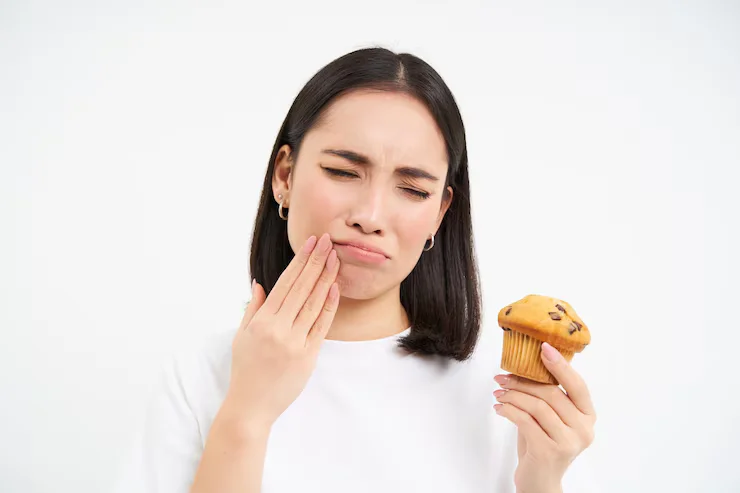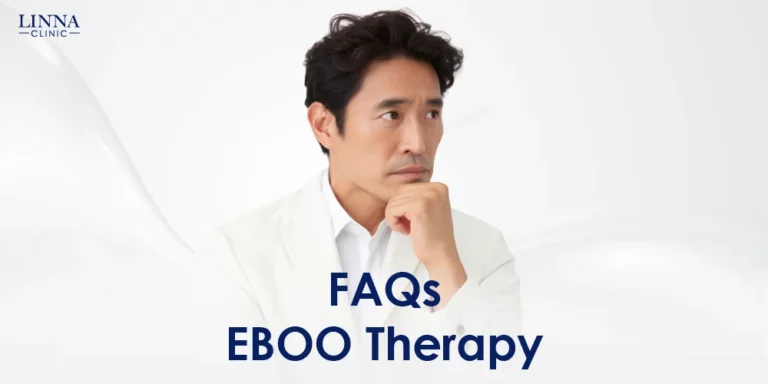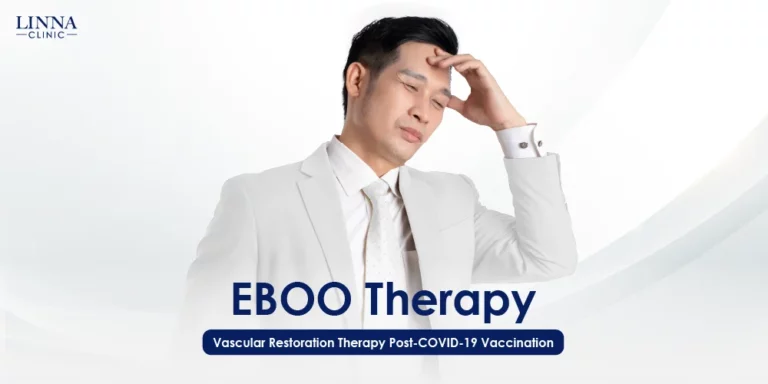Feeling tired, lacking energy, and having a foggy brain? The cause of these symptoms might not just be stress or lack of rest, but also related to a decrease in NAD+ levels in the body as we age, causing various systems to not function at full capacity and making the body feel more easily fatigued. However, with the advancement of health-promoting innovations, we can replenish NAD+ in the body in various ways, including through food, supplements, and medical techniques like NAD+ Therapy by specialist physicians, to help restore cellular energy precisely. What is NAD+? Is it really good? And how can we increase NAD+ levels in the body? LINNA Clinic has all the answers.
Table of Contents
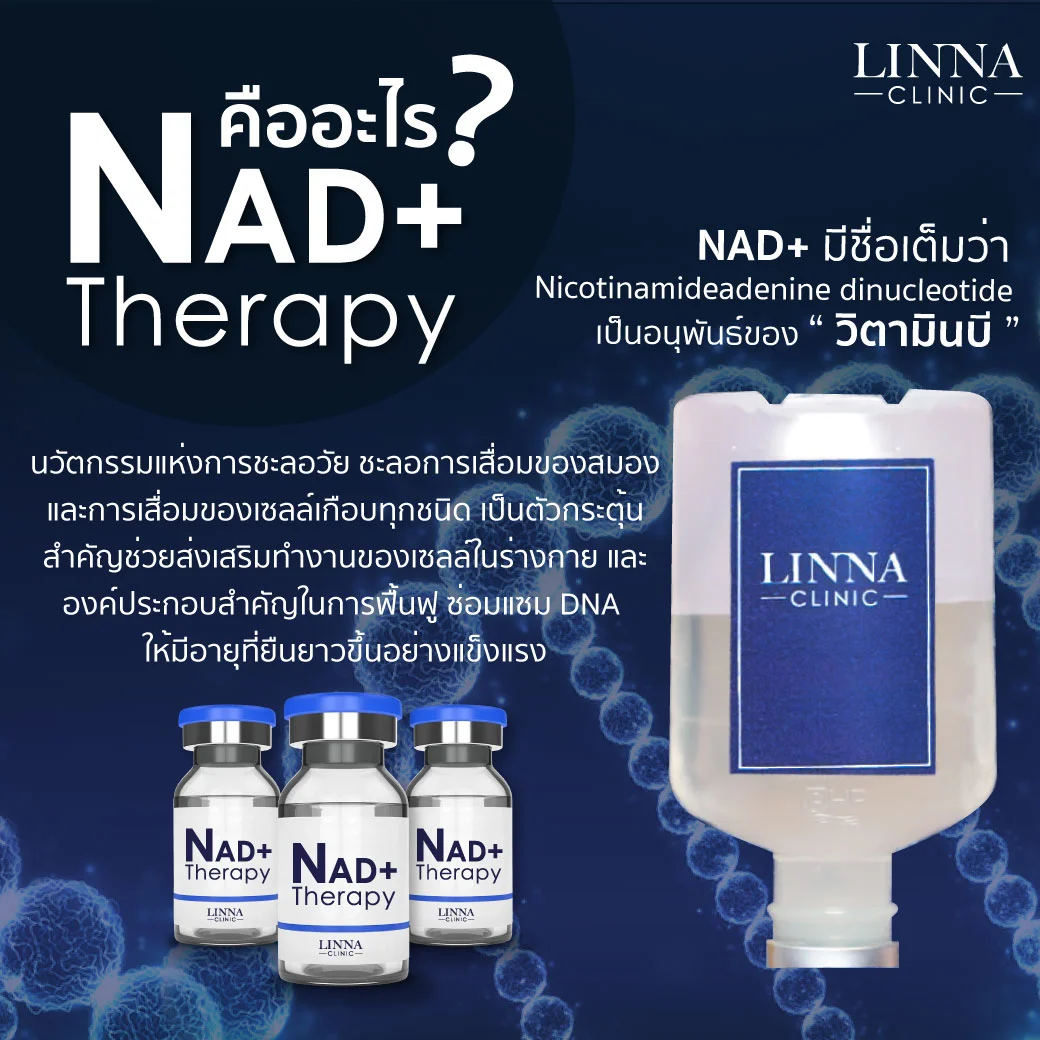

What is NAD+? Why is it important?
NAD+ or Nicotinamide Adenine Dinucleotide is a coenzyme in the vitamin B3 derivative group that plays a key role in cellular energy production (ATP), helps repair damaged DNA, and stimulates the Sirtuins enzyme group involved in anti-aging and overall health promotion.
Although the body can naturally produce NAD+, aging and daily stressors cause NAD+ levels to decline, leading to cellular degeneration, skin wrinkling, slowed metabolism, and increased risk of chronic diseases like diabetes, cardiovascular disease, obesity, and Alzheimer’s disease. Replenishing NAD+ with suitable methods is crucial for restoring cellular energy and promoting overall health.
The process of NAD+ production in the body from precursors NMN, NAM, NR
Our body can produce NAD+ on its own from various important precursors through two main production pathways: the De Novo Pathway, which creates NAD+ from the amino acid Tryptophan, and the Salvage Pathway, which recycles precursors such as NMN, NAM, and NR. These can be produced by the body and supplemented through food or supplements to maintain stable NAD+ levels.
- NMN (Nicotinamide Mononucleotide) is a direct and highly efficient precursor of NAD+ because it is the molecule closest to NAD+. NMN within cells is directly converted to NAD+ by the enzyme NMNAT (Nicotinamide Mononucleotide Adenylyl Transferase), making it a rapid way to increase NAD+ levels.
- NAM (Nicotinamide or Niacinamide) is another form of vitamin B3 that the body can use to create NAD+. NAM is converted to NMN via the enzyme NAMPT (Nicotinamide Phosphoribosyl Transferase) before NMN is converted to NAD+ by NMNAT. Due to multiple steps, it may take longer than using NMN or NR directly.
- NR (Nicotinamide Riboside) is another form of vitamin B3 and a precursor of NAD+ that the body absorbs well, especially in the nervous system and brain. The body absorbs NR and converts it to NMN via the enzyme NRK (Nicotinamide Riboside Kinase), then to NAD+.
Although the body can synthesize NAD+ through these processes, aging, stress, poor sleep, certain medications or chemicals, and inflammation can reduce NAD+ production. External NAD+ supplementation is an option to restore bodily functions.
Ways to increase NAD+ levels in the body
There are several ways to increase NAD+ levels in the body, each with varying effectiveness:
- Eating foods high in vitamin B3, such as avocados, tomatoes, broccoli, potatoes, salmon, seafood, grains and seeds, legumes, eggs, and dairy products.
- Engaging in cardio and weight training exercises to accelerate metabolism and stimulate Sirtuins enzymes, enhancing NAD+ recycling and production.
- Taking NMN and NR supplements to promote NAD+ production in the body.
- NAD+ Therapy, a popular method in reputable health clinics, involves direct intravenous infusion of NAD+ by physicians for rapid absorption, bypassing digestion, unlike food and supplements.This you can get the NAD+ absorbed directly to your cell.
What is NAD+ Therapy? Is it really good?
NAD+ Therapy or NAD+ IV Drip Therapy involves intravenous administration of NAD+ to directly increase NAD+ levels, especially in the brain and liver. NAD+ Therapy allows for faster and more efficient NAD+ absorption than supplements or other methods.
Benefits of NAD+:
- Increases energy and reduces fatigue by boosting ATP, the primary cellular energy source, resulting in increased vitality and reduced chronic fatigue.
- Enhances brain function and memory, reduces brain fog, and lowers the risk of Alzheimer’s or Parkinson’s disease.
- Stimulates cellular repair and anti-aging by activating Sirtuins enzymes, which are involved in DNA repair and longevity, thus slowing cellular aging, promoting health, and delaying skin aging.
- Boosts metabolism and aids weight management by enhancing fat and sugar metabolism, improving energy utilization, and reducing metabolic disease risks.
- Strengthens the immune system and reduces inflammation, lowering the risk of chronic diseases such as diabetes, hypertension, bone diseases, and cardiovascular diseases.
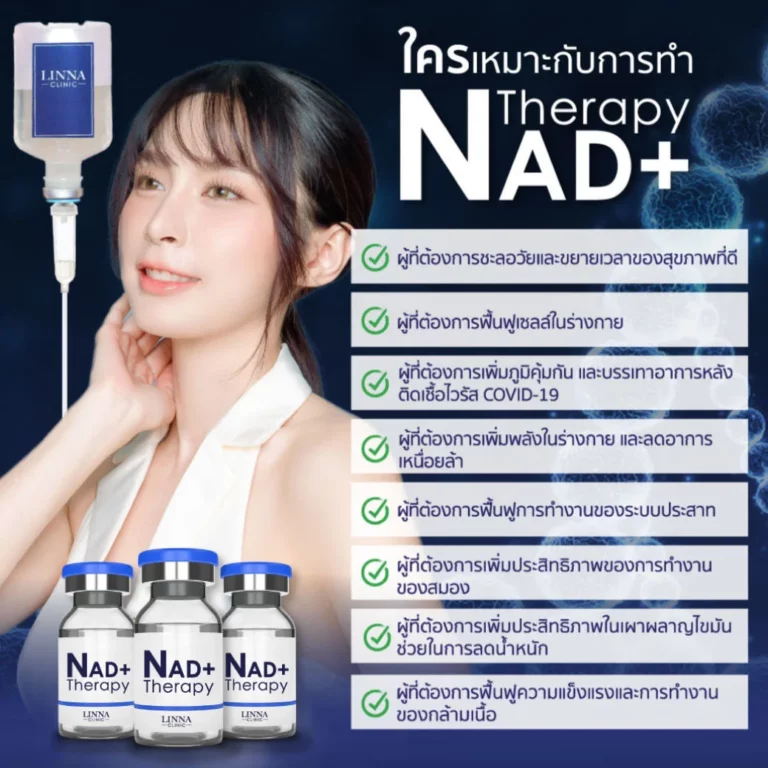
Who is NAD+ suitable for?
- Individuals with chronic fatigue.
- Those with prolonged mental exertion, seeking cognitive enhancement.
- Those seeking anti-aging and holistic health improvement.
- Athletes or those with strenuous exercise routines, seeking muscle recovery.
- Individuals recovering from substance abuse.
- Those seeking to boost metabolism for weight management and chronic disease prevention.
How many NAD+ sessions should be done?
Initially, weekly sessions for 4-5 weeks are recommended to adequately increase NAD+ levels. Maintenance may involve monthly sessions. Frequency depends on individual conditions and physician assessment.
Is NAD+ Therapy dangerous?
Generally, NAD+ Therapy is not dangerous, as the NAD+ infused intravenously is the same coenzyme that the body naturally produces. However, NAD+ Therapy should be administered under the supervision of a specialist physician with a thorough physical assessment to evaluate risks and adjust the dosage and frequency to suit individual needs.
Side effects after NAD+ Therapy:
During and after NAD+ Therapy, some individuals may experience headaches, dizziness, rapid heartbeat, or nausea. These symptoms can be managed by slowing the infusion rate. After the therapy, redness or irritation may occur in some patients at the injection site, which usually resolves within 2-3 days.
Conclusion
NAD+ is a vital coenzyme for various bodily functions, including energy production, metabolism, cellular repair, anti-aging, and nervous system function. As NAD+ levels decline with age, cellular degeneration occurs. Intravenous NAD+ Therapy is an option for efficient recovery. For those experiencing fatigue, seeking health improvement, cannot sleep well or interested in NAD+ Therapy, contact LINNA Clinic at 063-609-8888 or Whatsapp +66919799554 or LINE Official @linnaclinic for consultation or appointments with our expperience physician.


